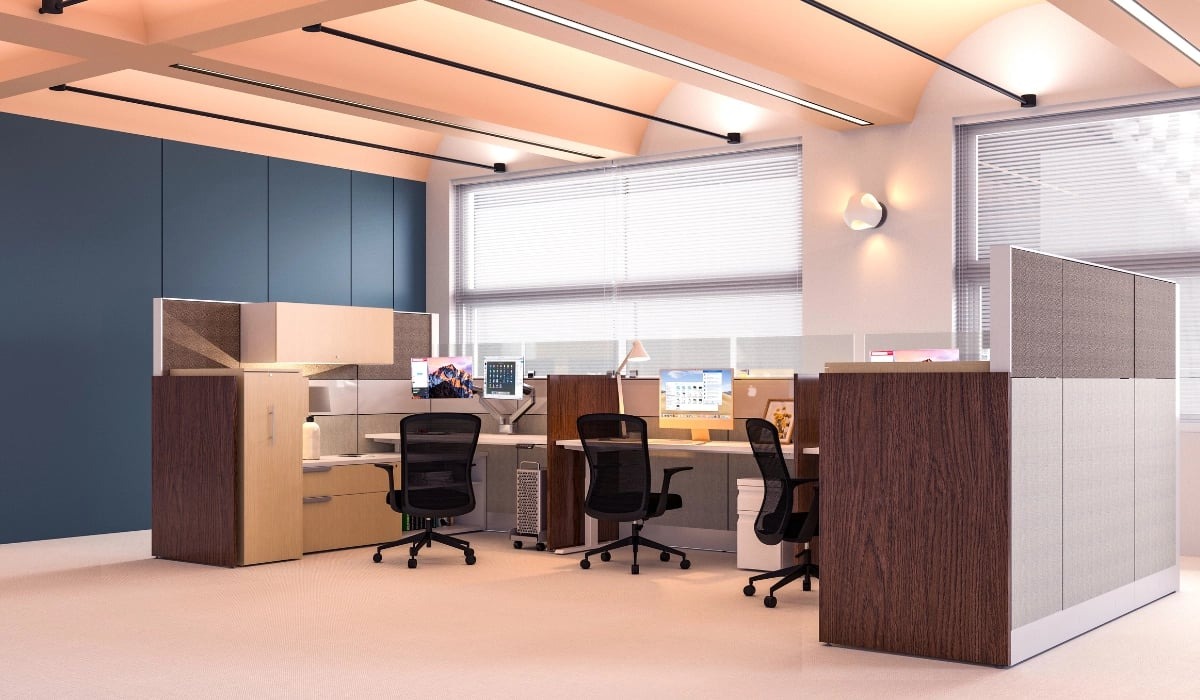The modern workplace is undergoing a transformation. As organizations continue to adopt flexible work policies and emphasize teamwork, the need for collaborative work environments has become more pressing than ever. One of the most effective ways to foster this kind of environment is through the use of modular stations. These adaptable setups offer a practical solution to the limitations of traditional office layouts, enabling businesses to support collaboration while maintaining efficiency and productivity.
Creating a collaborative workspace isn’t about tearing down every wall or replacing every desk—it’s about designing with purpose. It requires thoughtful planning, the right tools, and a focus on how people interact with their surroundings. Modular stations allow companies to adapt quickly, accommodate different work styles, and encourage organic teamwork. In this post, we’ll explore the strategy behind modular design and how you can use it to build a dynamic, collaboration-friendly workplace that suits your team’s evolving needs.
Rethinking the Traditional Office Layout
Traditional office layouts tend to rely on fixed structures: rows of desks, assigned seating, and static conference rooms. While these arrangements offer a degree of order, they often limit flexibility and hinder spontaneous interaction. Today’s teams need spaces that respond to the nature of their work—whether that’s brainstorming a new product, collaborating on a presentation, or engaging in a focused individual task.
The evolution of the office workstation has played a major role in this shift. Where once these stations were defined by partitions and personal space, they are now evolving into shared zones with configurable layouts. These spaces not only reflect the changing ways we work but also support a healthier, more connected office culture. By using modular elements, teams can reconfigure workstations to suit their task—creating fluid environments that support both concentration and collaboration.
The Benefits of Modular Stations
Modular stations are built around the idea of adaptability. Unlike static workspaces, they can be rearranged or redefined depending on the project or the needs of the team. This flexibility allows organizations to create an office environment that scales and changes alongside business goals. Whether you’re welcoming a new department, launching a creative sprint, or hosting a cross-functional meeting, modular stations can be restructured to fit the moment.
Another benefit of modular workstations is their impact on communication. When people have the freedom to move and shift their space, natural conversations and collaboration are more likely to happen. In contrast, rigid setups often force communication into formal settings, which can hinder innovation. Modular layouts eliminate these barriers, making it easier for teams to connect in real time and in a more informal way.
Designing for Collaboration
Creating a collaborative workspace starts with intention. You need to understand how your teams work, what kind of interactions they rely on, and how the physical environment can either support or obstruct those behaviors. Begin by observing the flow of your workplace—who talks to whom, where ideas are shared, and what spaces are underutilized. From there, you can identify where modular stations will be most impactful.
Consider the types of work your employees engage in. Creative teams, for example, often thrive in open environments where they can sketch ideas or brainstorm freely. On the other hand, data analysts or legal teams might require more privacy and focus. Modular stations make it possible to cater to both needs. With movable panels, height-adjustable desks, and customizable storage, teams can shape their own environment while still being part of the larger collaborative framework.
Integrating Technology with Modular Design
Technology is a vital component of any modern office, and it should seamlessly integrate with your modular layout. As more businesses embrace digital collaboration tools, it’s important that your workstations are equipped to support them. This includes providing power sources, mounting options for monitors, and easy access to shared screens or conferencing tools.
When designing modular stations, think about how your teams will connect—not just with each other, but with clients and remote colleagues. Built-in charging ports, cable management systems, and wireless connectivity hubs can enhance the functionality of your workstations without compromising aesthetics or flow. The goal is to ensure your technology complements the space rather than complicates it.
Fostering a Sense of Community
At its core, a collaborative workspace is about people. It’s about creating a space that brings individuals together, encourages idea-sharing, and fosters mutual respect. Modular stations contribute to this by breaking down physical barriers and promoting shared ownership of the workspace. When employees feel like they have control over their environment, they’re more likely to feel connected to their team and invested in their work.
Incorporating lounge areas or informal meeting spots adjacent to modular stations can also boost engagement. These areas create natural gathering points, where conversations flow more freely and ideas can be exchanged without the pressure of a formal meeting room. Ultimately, it’s this blend of function and freedom that makes modular design so effective at building community within the workplace.
Evolving with Your Business
One of the biggest challenges companies face is the speed at which they grow and change. Hiring new talent, adopting new workflows, or pivoting to meet market demands can put strain on traditional office designs. Modular stations offer a scalable solution. Because they can be quickly rearranged, repurposed, or expanded, they allow organizations to adapt without the cost and disruption of major renovations.
As your business evolves, so too should your workspace. Review your office layout regularly to ensure it still supports your team’s needs. Ask for employee feedback, monitor how spaces are used, and don’t be afraid to experiment. The modular approach means that no change is permanent and every configuration is an opportunity to improve productivity and culture.
Sustainability and Smart Investment
Modular office furniture is often more sustainable than traditional office setups. Because these pieces are designed to be reused and reconfigured, they reduce waste and minimize the need for frequent replacements. Many manufacturers now offer eco-friendly materials and design options, giving companies the ability to reduce their environmental footprint while still achieving a high-quality, professional look.
From a financial perspective, modular stations can also offer long-term savings. The ability to adapt your office layout without purchasing new furniture or undertaking construction makes modular design a smart investment. It’s a cost-effective way to future-proof your workspace, keeping it relevant and functional for years to come.
Final Thoughts: Building the Future of Work
Creating a collaborative workspace using modular stations is more than a design choice—it’s a strategy for enabling success in the modern office. As organizations continue to prioritize agility, innovation, and employee well-being, the demand for adaptable work environments will only grow. Modular workstations offer a practical, flexible, and future-ready solution.
The best collaborative workspaces are those that evolve with the needs of their users. By focusing on flexibility, thoughtful design, and the power of shared environments, companies can create offices that not only support collaboration but actively inspire it. Whether you’re redesigning a single department or reimagining your entire office, modular stations provide the foundation for a workspace that works for everyone.



